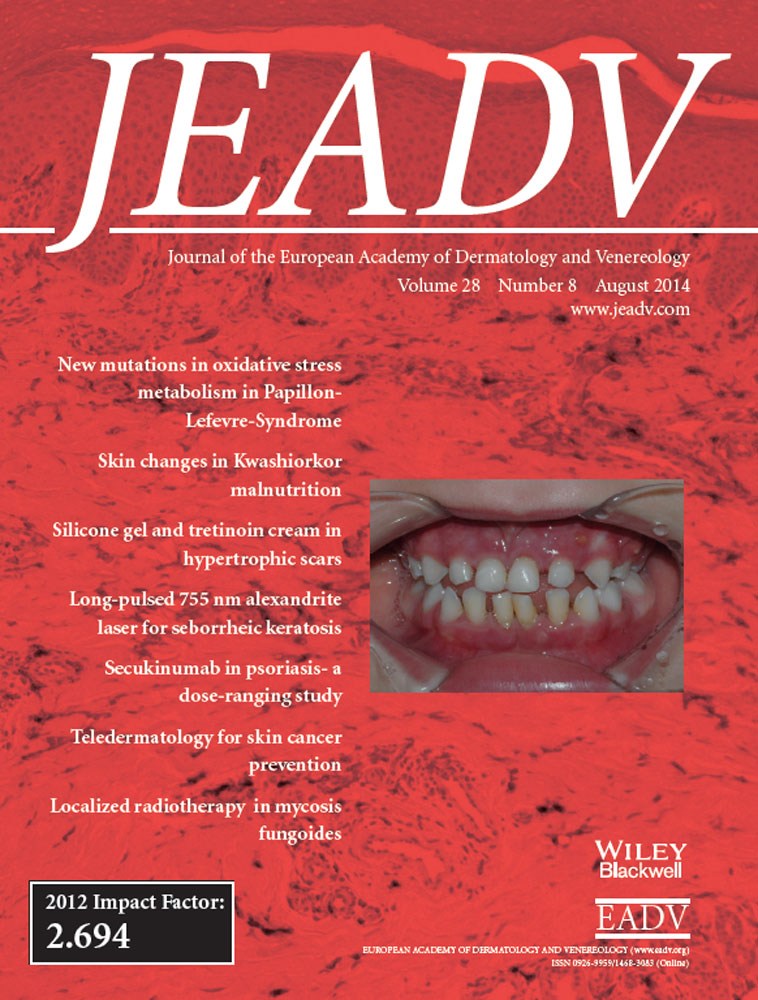Audiological abnormalities in patients with alopecia areata
Conflicts of interest
None declared.Funding sources
Study supported in part by the Italian Ministry of Health (RF-2010-2316524).Abstract
Background
Audiological abnormalities seen in various autoimmune disorders raises the question of whether such abnormalities also exist in alopecia areata.
Objective
This study was performed to detect possible audiological abnormalities in Alopecia areata (AA) patients.
Methods
The study population consisted of 51 patients with AA and 51 healthy controls. Autoscopic and audiometric examinations of both ears were performed in patients and controls. Audiometric examinations were performed using a pure tone audiometer in a silent cabin. Pure tone thresholds were determined for each ear at frequencies of 250–16000 Hz for air conduction.
Results
Sensorineural hypoacusis was found in 28 patients with AA (54.9%). Six of these 28 patients showed unilateral minimal hearing loss (>30 dB) at high frequencies only (4000–16 000 Hz), while 22 showed bilateral minimal hearing loss (>30 dB) at high frequencies only (4000–16 000 Hz). Hypoacusis was observed in 13 control subjects (25.4%). Sensorineural hypoacusis was significantly more frequent in AA patients than controls (P = 0.002).
Conclusion
Follicular melanocytes may be an important target in the autoimmune process of AA and AA may have an effect on hearing function by affecting the melanocytes in the inner ear. Therefore, there may be a relationship between sensorineural hearing loss and the autoimmune disease, AA.




